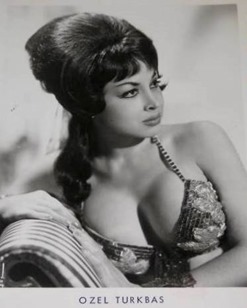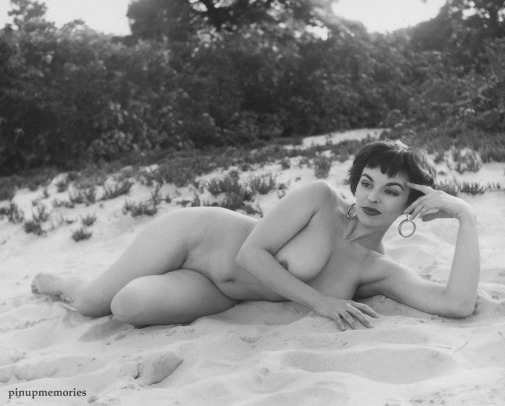![457_chero_cola_05 457_chero_cola_05]() The year was 1905 in Columbus, Georgia. The Hatcher Grocery Co, a family wholesale grocery business, purchased bottled drinks from a local bottler and resold them to its customers. Mr. Hatcher requested commission or compensation for handling the drinks and a dispute arose because of this from the bottler. Mr. Hatcher then came to a conclusion to buy no more cases from outside and produce and bottle his own drinks under his own labels.
The year was 1905 in Columbus, Georgia. The Hatcher Grocery Co, a family wholesale grocery business, purchased bottled drinks from a local bottler and resold them to its customers. Mr. Hatcher requested commission or compensation for handling the drinks and a dispute arose because of this from the bottler. Mr. Hatcher then came to a conclusion to buy no more cases from outside and produce and bottle his own drinks under his own labels.
A young graduate pharmacist, Claud A. Hatcher began by creating his own soft drinks in the basement of his grocery business. Originally called the Union Bottling Works, the first line of beverages was named Royal Crown, a ginger ale and the first cola was called Chero-Cola. Also produced were Royal Crown Ginger Ale and Royal Crown Strawberry. It remained Union Bottling Works until the name changed to Chero-Cola Co, and expansion led to a decision to incorporate the ![457_chero_cola_04 457_chero_cola_04]() company. A charter was granted by Judge S. Price Gilbert in Muscogee County Superior Court of Columbus in 1912. Chero-Cola was to manufacture a line of syrups and concentrates to be sold to franchised bottlers under trademarks owned by Chero-Cola Co. Following years showed steady growth in sales, profits and company assets.
company. A charter was granted by Judge S. Price Gilbert in Muscogee County Superior Court of Columbus in 1912. Chero-Cola was to manufacture a line of syrups and concentrates to be sold to franchised bottlers under trademarks owned by Chero-Cola Co. Following years showed steady growth in sales, profits and company assets.
An application filed in April of 1914 to register the Chero-Cola trademark instituted a law suit by Coca-Cola that lasted years. In fact, litigation continued in one form or another until 1944 when it was won, setting for all times the right to use the word "cola" in the name of its beverages.
![457_chero_cola_03 457_chero_cola_03]() Then came WWI and the Food Administration’s limitations on sugar usage. In response to this, Chero-Cola Co established and operated its own sugar refinery, using raw sugar it purchased from Cuba, operating for about three years. The sugar the refinery furnished did not meet the full needs of the company and was supplemented by the purchase of refined sugar. After filling to capacity every company warehouse in Columbus, the price of sugar dropped to a low of eight cents a pound in December of 1920.
Then came WWI and the Food Administration’s limitations on sugar usage. In response to this, Chero-Cola Co established and operated its own sugar refinery, using raw sugar it purchased from Cuba, operating for about three years. The sugar the refinery furnished did not meet the full needs of the company and was supplemented by the purchase of refined sugar. After filling to capacity every company warehouse in Columbus, the price of sugar dropped to a low of eight cents a pound in December of 1920.
To compensate, common stock was sold to raise capital during the years 1922-1924, however it was not until 1926 that the debts were finally settled. It was the company’s continuous growth prior to the sugar shortage and depression that generated confidence in the business and its management, enabling the financing which enabled it to survive. Some other bottling companies were not as lucky.
During this time, Chero-Cola Co made a basic change in its manufacturing that has continued to the present day. Before, products were made and shipped as bottling syrup, with all the ingredients, including sugar, already added. The bottler had to only add water and carbonation. Now Its products shipped as concentrates, requiring the bottler to add sugar and water to the concentrate. One gallon of concentrate made 26 gallons of soft drink syrup resulting in savings of both container and freight costs, and giving the beverage a fresher taste.
![457_chero_cola_06 457_chero_cola_06]()
When franchising bottling plants began in 1912, the first plants were in the southeast, with additions of about 25 new bottlers each year prior to WWI. The war and economy halted further efforts to expand. As from the beginning, the company, seeking to establish bottlers on a sound and permanent basis, had never been willing to grant a franchise or sell it products to just any bottler willing to accept them. Even so, by the end of 1921, there were over 200 plants in the organization and by 1925, there were 315 plants in 14 southern states. During 1926 and 1927, additional plants were added, bringing the total to 463.
In 1924, Claud Hatcher overheard a route salesman enter the plant one day![457_chero_cola_02 457_chero_cola_02]() and describe a competitors tall bottle as being "knee-high." This phrase, to the receptive mind of Claud Hatcher, became Nehi, beginning the line of fruit favours which became so successful that in 1928 the company changed its name for the second time, from Chero-Cola Co. to the Nehi Corporation.
and describe a competitors tall bottle as being "knee-high." This phrase, to the receptive mind of Claud Hatcher, became Nehi, beginning the line of fruit favours which became so successful that in 1928 the company changed its name for the second time, from Chero-Cola Co. to the Nehi Corporation.
The Nehi Corp. was listed on the New York Curb Exchange. The company’s second major crisis occurred–the stock market crash of October 1929. Sales of Nehi Corp. dropped one million dollars in 1930 from a previous year’s high of $3.7 million. Sales continued downward until the bottom was reached in 1932, the only year in which the company had ever lost money. In the years following, expansion was made in the areas where there was no distribution and its smaller unprofitable plants were consolidated, creating a stronger organization.
By December 31, 1933, the business was just beginning to stabilize when another tragedy struck, Claud A. Hatcher died suddenly.
![457_chero_cola_01 457_chero_cola_01]() When H. R. Mott took office in 1934, having been with the company since 1920 and vice-president of the Nehi Corp for several years, he was welcomed by a great amount of debt. His wish was to make the company debt free as quickly as possible, and keep it that way, by streamlining operations, obtaining credit extensions, and cutting expenses. A year later, he had achieved his goal.
When H. R. Mott took office in 1934, having been with the company since 1920 and vice-president of the Nehi Corp for several years, he was welcomed by a great amount of debt. His wish was to make the company debt free as quickly as possible, and keep it that way, by streamlining operations, obtaining credit extensions, and cutting expenses. A year later, he had achieved his goal.
During this year, Mott felt the company needed an improved cola product, and called the company chemist, Rufus Kamm, to make one. Six months later, a new cola concentrate was sent for selective market testing. It was successful and given the brand name of Hatcher’s original ginger ale, Royal Crown. A Nehi bottler named Grubb from Dothan, Alabama was one of the first to bottle the new Royal Crown Cola, later abbreviated to "RC".
By 1940, when H.R. Mott moved up to Chairman of the Board and relinquished the Presidency of Nehi Corp to C.C. Colbert, the company was profitable and growing fast. 1940 was also the year that Nehi stock was listed on the New York Stock Exchange, with the company’s products available in 47 of the 48 states.. C.C. Colbert served as president of the company from 1940 to 1955, during which time he directed the company in its most rapid expansion of sales and profits to date.
![457_chero_cola_08 457_chero_cola_08]() During the years of World War II, the Nehi Corporation and its bottlers were again limited in their growth. But in 1946, Nehi Corp accelerated tremendously, enhancing its advertising by using entertainment celebrities. Bing Crosby, Joan Crawford (before inheriting Pepsi), Bob Hope, Linda Darnell, Joan Caulfield, Barbara Stanwyk, Rita Hayworth, Dorothy Lamour, Ann Sheridan, Gary Cooper, Lauren Bacall, June Haver, Claudette Colbert, Mary Martin, Veronica Lake, Jeanette MacDonald, Paulette Goddard, Lisabeth Scott (who also did a Pepsi ad) in the 40′s and Art Linkletter in the 60′s. Robert Ripley was on the air for Royal Crown Cola every Friday evening on CBS. The "Saturday Evening Post" and "Good Housekeeping" carried color advertisements for Royal Crown Cola. In 1947, Hedy Lamarr was pictured in point of purchase signs.
During the years of World War II, the Nehi Corporation and its bottlers were again limited in their growth. But in 1946, Nehi Corp accelerated tremendously, enhancing its advertising by using entertainment celebrities. Bing Crosby, Joan Crawford (before inheriting Pepsi), Bob Hope, Linda Darnell, Joan Caulfield, Barbara Stanwyk, Rita Hayworth, Dorothy Lamour, Ann Sheridan, Gary Cooper, Lauren Bacall, June Haver, Claudette Colbert, Mary Martin, Veronica Lake, Jeanette MacDonald, Paulette Goddard, Lisabeth Scott (who also did a Pepsi ad) in the 40′s and Art Linkletter in the 60′s. Robert Ripley was on the air for Royal Crown Cola every Friday evening on CBS. The "Saturday Evening Post" and "Good Housekeeping" carried color advertisements for Royal Crown Cola. In 1947, Hedy Lamarr was pictured in point of purchase signs.
Mr. Colbert was succeeded as president in 1955 by Wilbur H. Glenn, who remained president of the company until April, 1965. The Nehi Corp also underwent its third name change to Royal Crown Cola Co. And its history carries on. Royal Crown Cola, Nehi and a later product, Diet Rite Cola, are still bottled today. But it is the early years that hold the attraction for the collector of soda memorabilia.
Text from Soda Brands Pics & Info on Anglefire
Help Needed
I need your help visitors, both in suggesting sodas and soft drinks from around the world and in giving your opinion on the ones presented if you know the product. And you can start with giving your opinion on the ones posted already or reading what other visitors have written – Ted
List of Soft drinks and sodas posted already
Visitors soft drinks and sodas suggestions and comments
Filed under:
Advertising,
Food & drinks,
Soft drinks and sodas Tagged:
Chero Cola,
Sodas,
Soft drinks ![]()
![]()









































































































